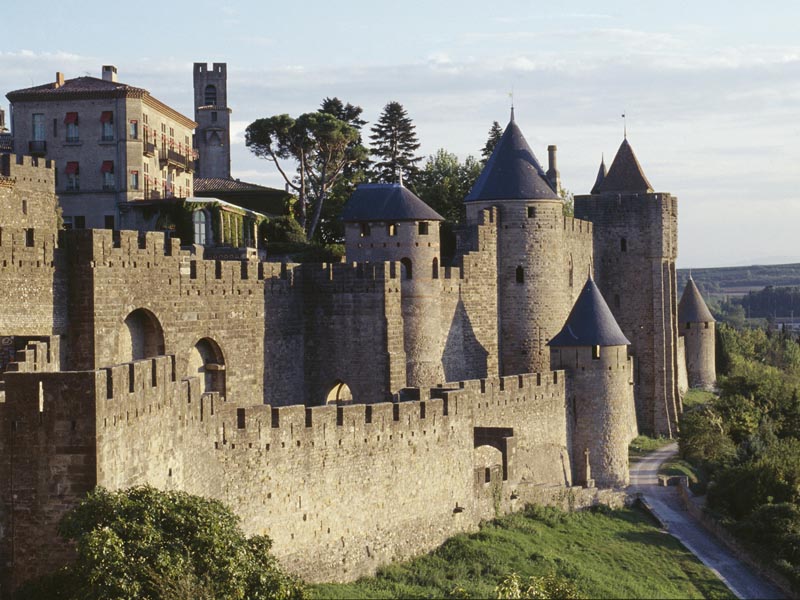Place Description
The city of Carcassonne is primarily known as a fortified medieval town. But its history is much more ancient : oppidum transformed in the first century BC into a roman city, the city became, during the 11h century, a possession of the powerful Viscount Trencavel, who was then dominating the Lower Languedoc. After the Albigensian Crusade, the city, with new fortifications, became one of the emblematic strongholds of the kingdom, on the border between France and Aragon.
The construction of the outer wall, and the modernisation of the inner wall, make this place an unassailable fortress. With the Treaty of the Pyrenees in 1659, which connects the Roussillon to France, the City losts its strategic role, stopping its defences works. In the 19th century, thanks to the joint action of Carcassonne and the Historical Monuments, its restoration is confided to Eugène Viollet-le-Duc; the ancient fortress regains its past appearance. It is now listed on the UNESCO World Heritage List.
It remains the most formidable series of fortifications that can still be admired in Europe. A veritable anthology of stone: throughout its three kilometers of ramparts, through its 52 towers, two gates, its barbicans, its castle and its basilica, in the labyrinth of its crenellated ramparts, its stairs, chicanes and gates, you can read the whole architecture of the Middle Ages.
On the west side of the fortification, rests the castle built in the 12th century by the Viscounts Trencavel. Constantly changed over the centuries, a veritable “fortress within the fortress », it now houses a lapidary museum. It has a large collection of relics from the city and the region: regional sculpture from Gallo-Roman to 17th century, stelae, sarcophagi, capitals, bowl of the abbey of Fontfroide (12th century), a magnificent Calvary of Villanière (15th century), wall paintings, statues, …
The basilica of Saint Nazaire is completed in the first half of the twelfth century. Redesigned several times, the building blends Romanesque and Gothic styles, and has the most beautiful stained glass windows in the south of France (13th and 15th centuries). It lost its cathedral status in 1801 in favor of the church of St Michel, located in La Bastide. It received in 1898 the title of basilica.



